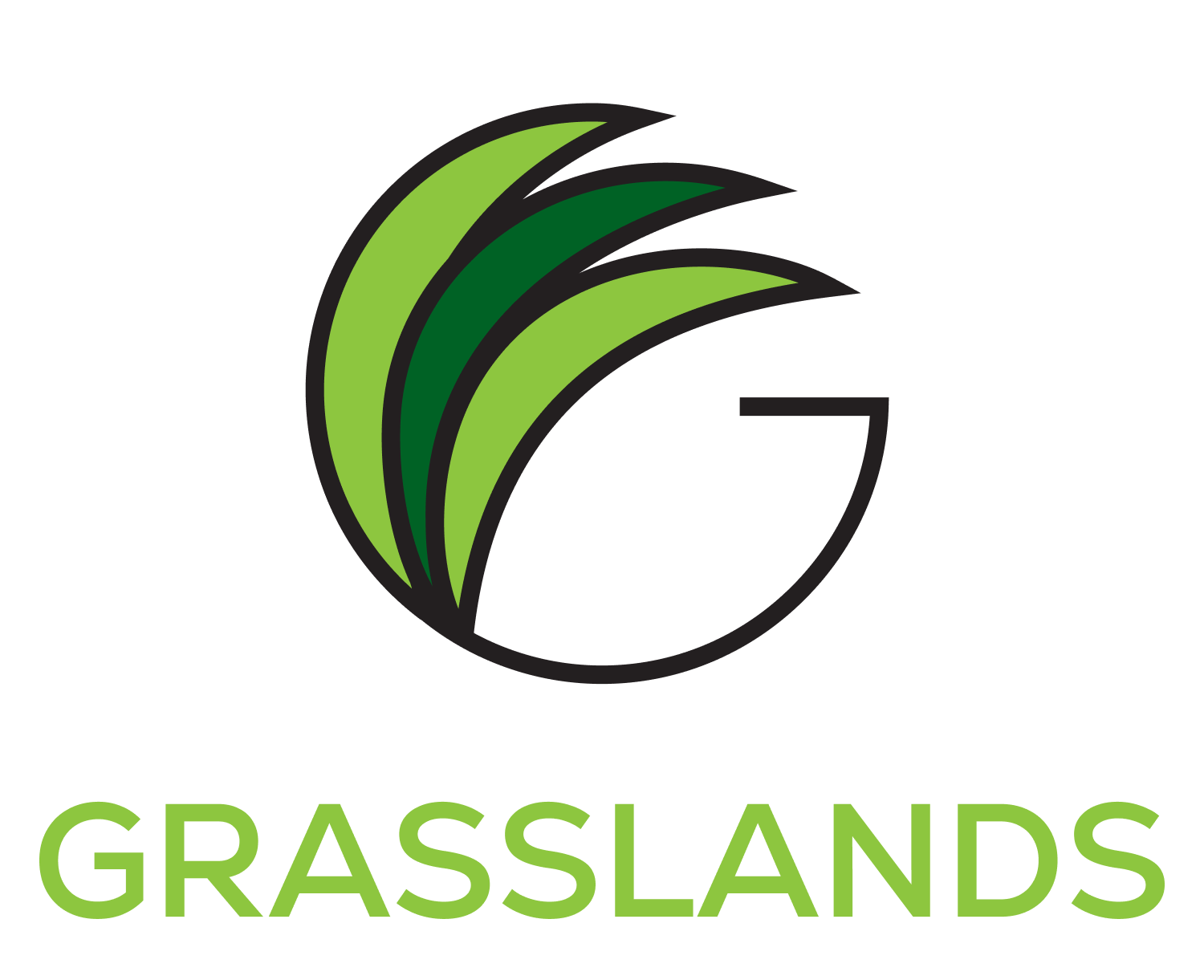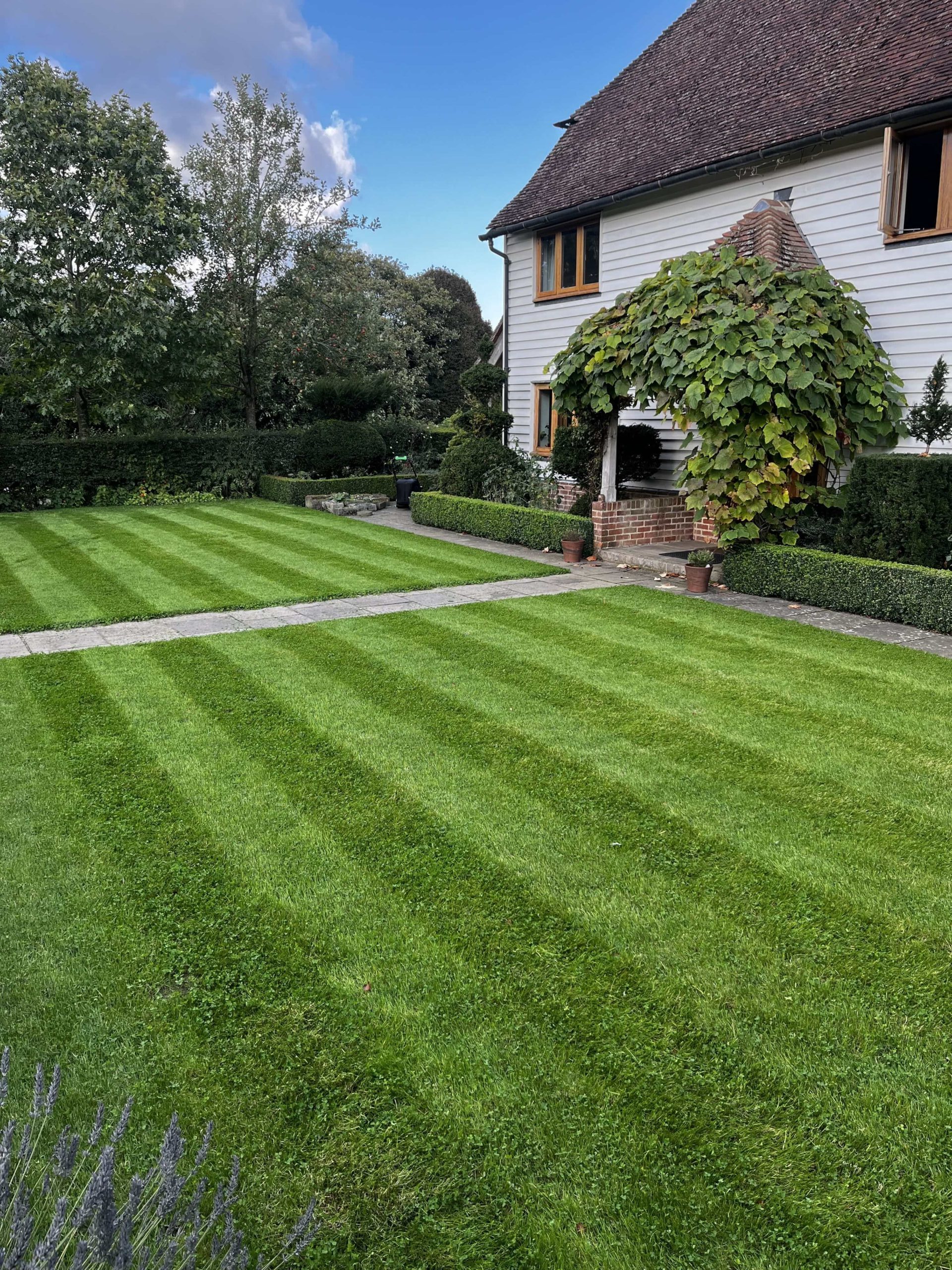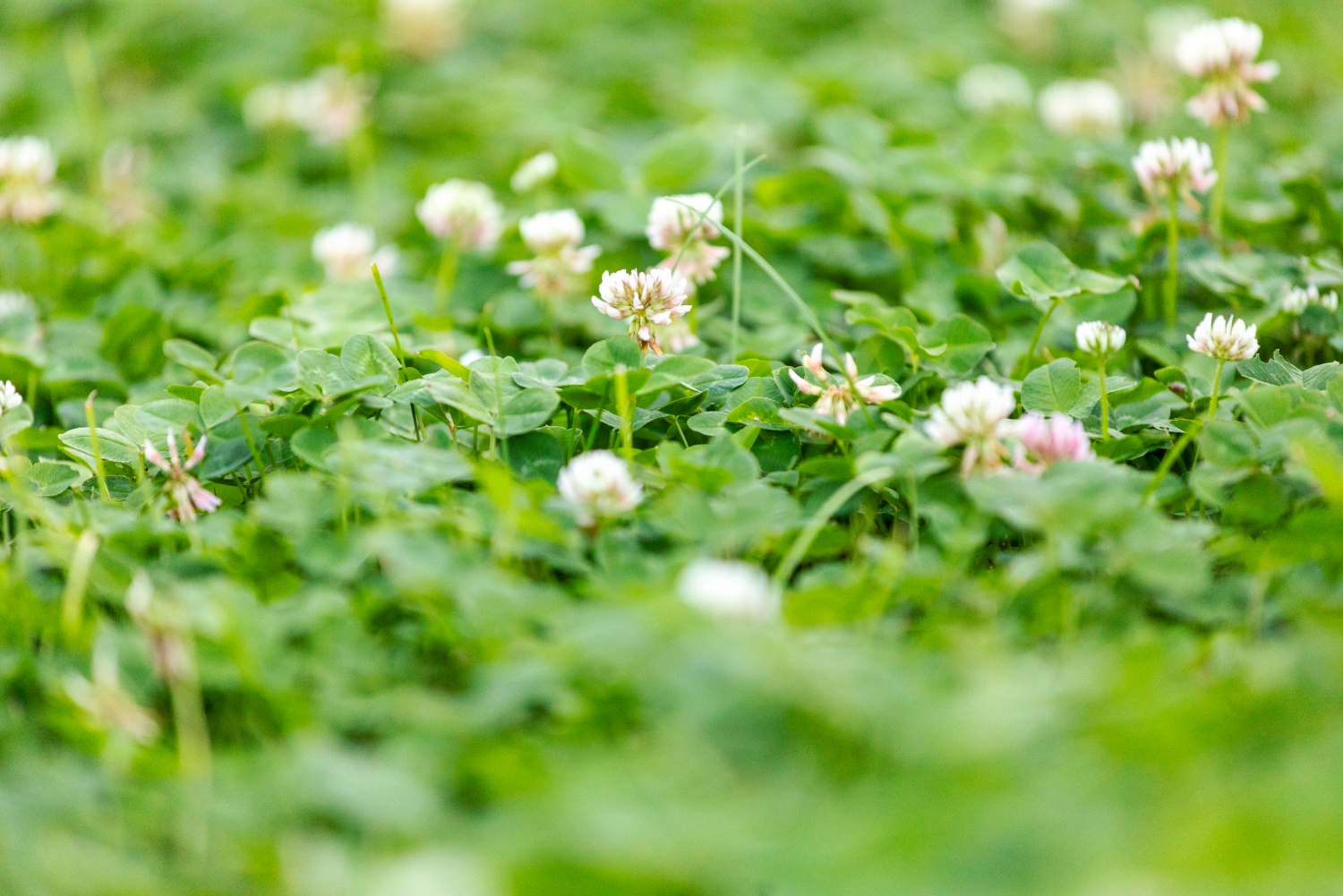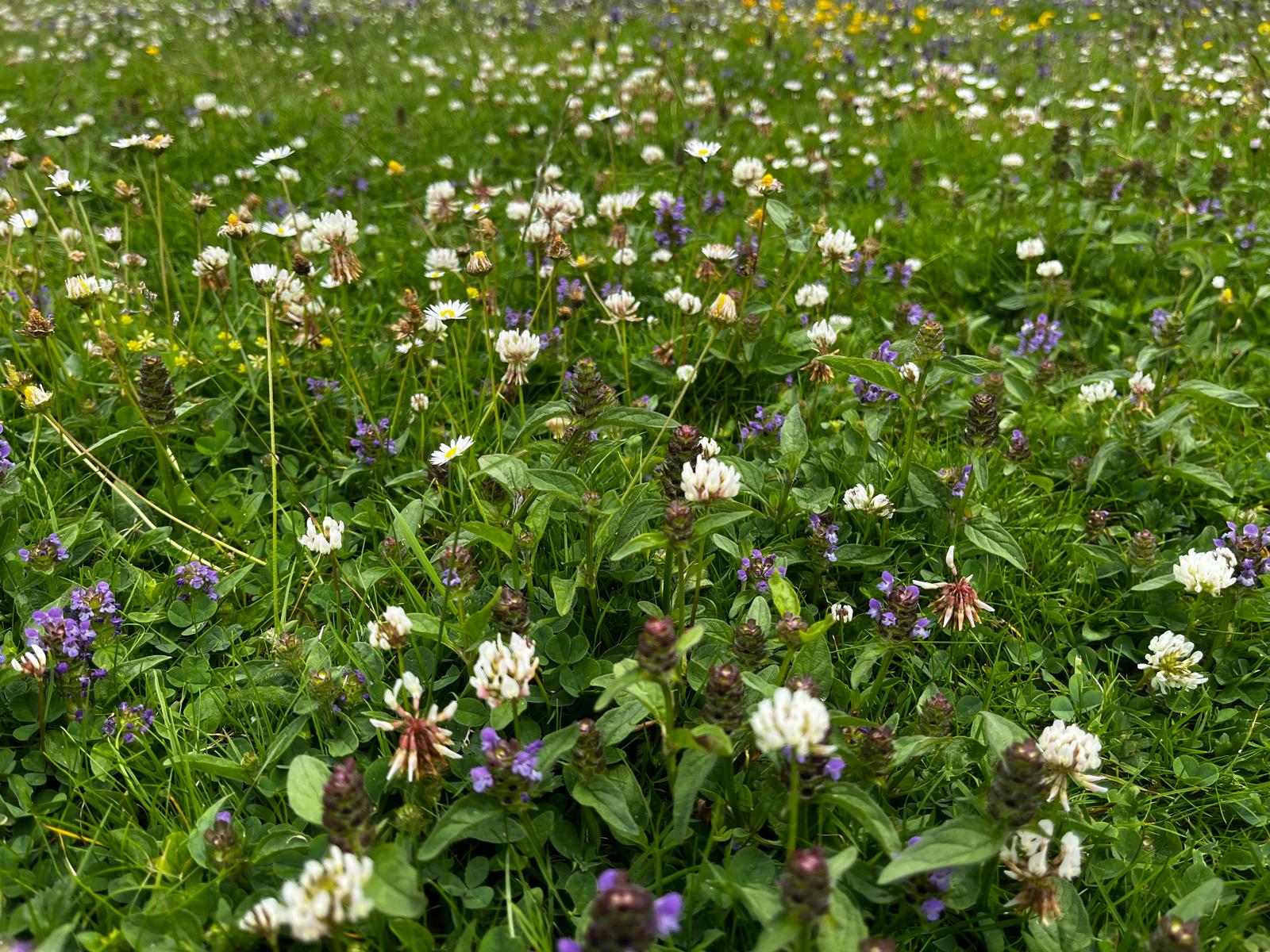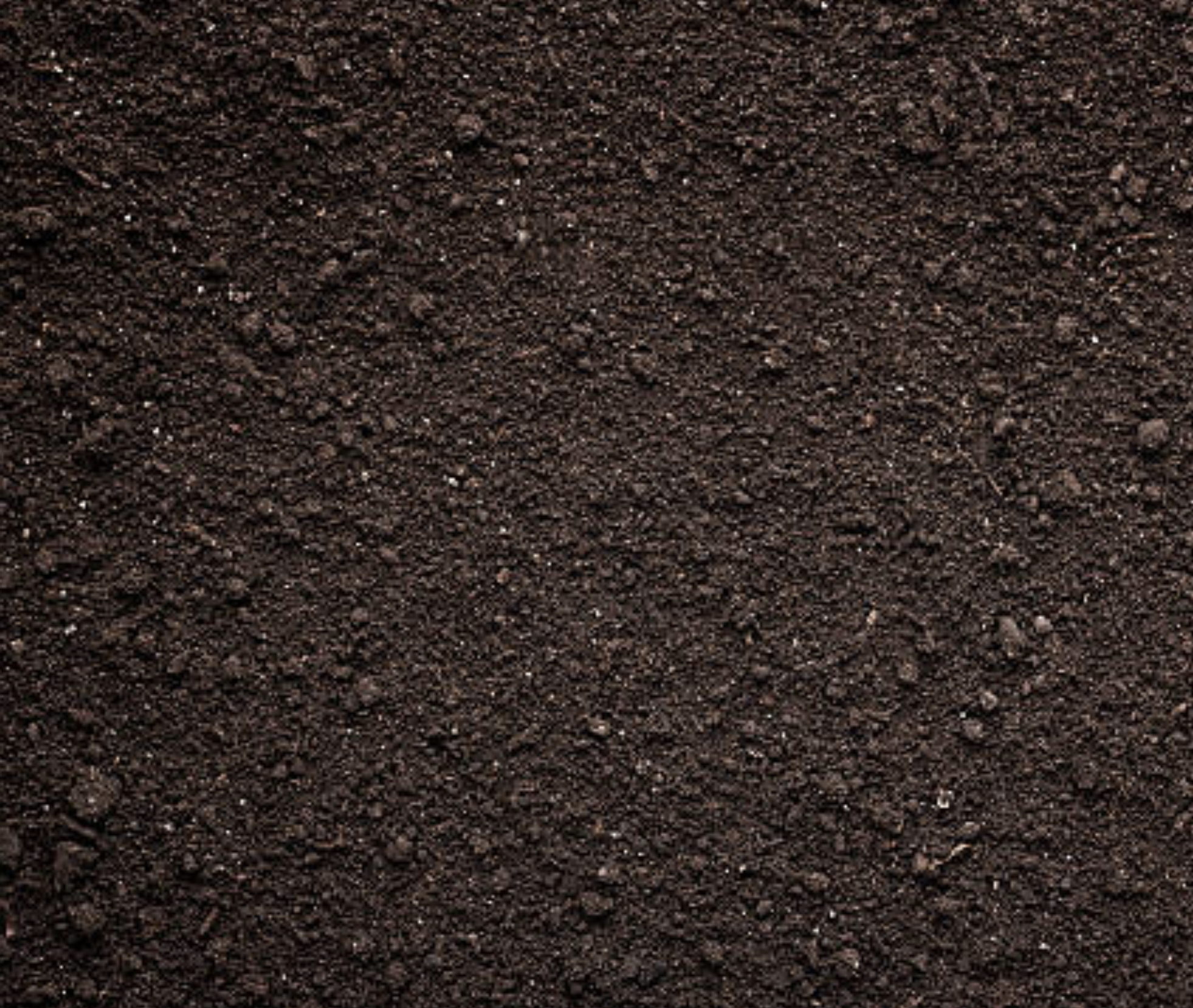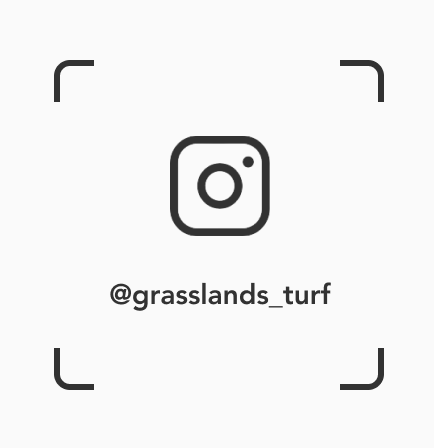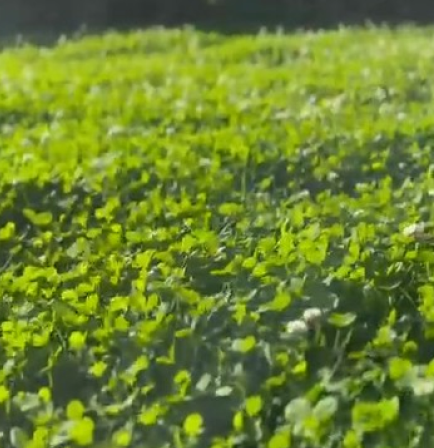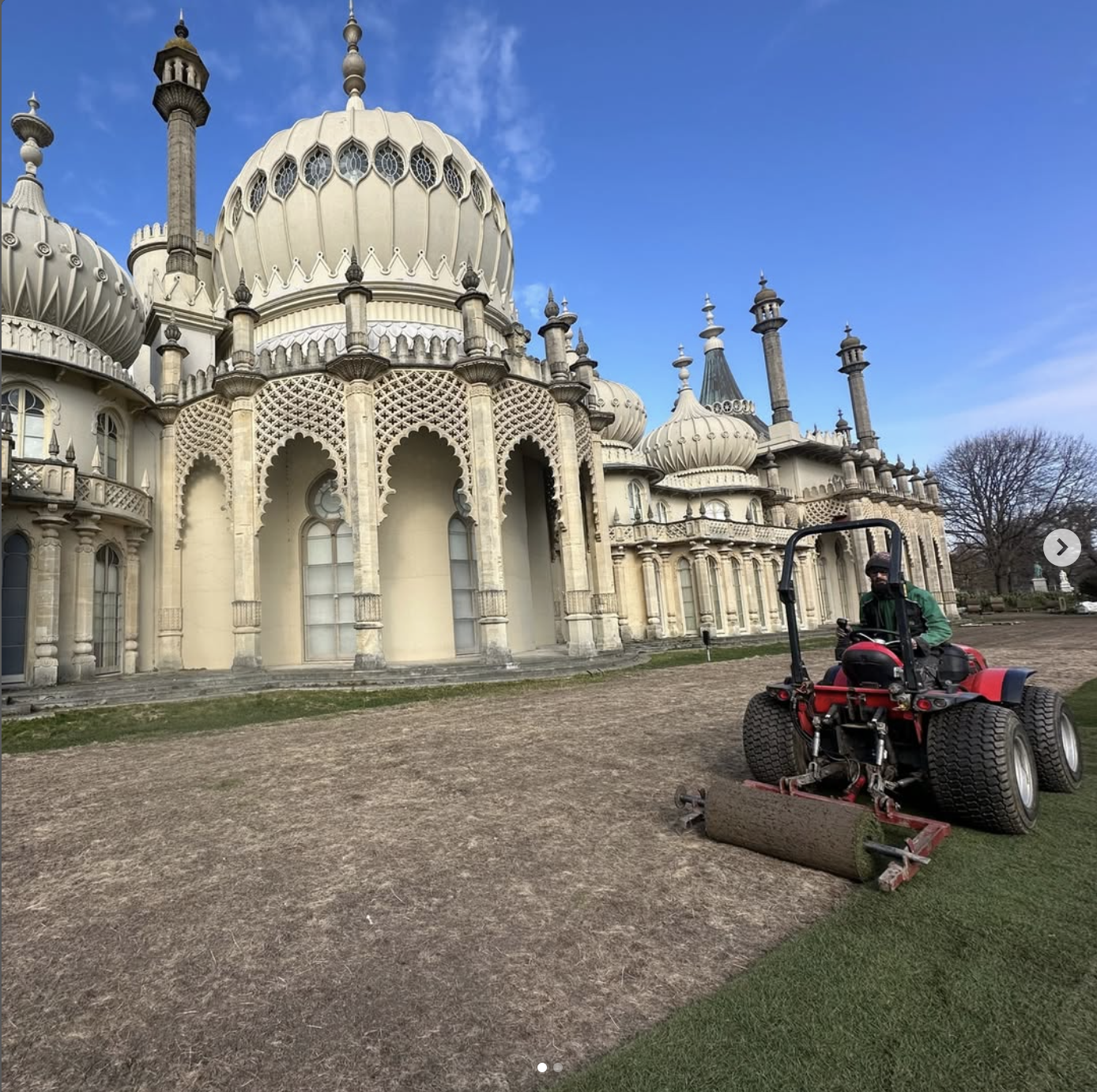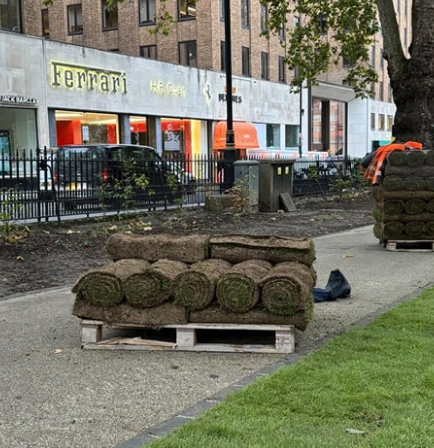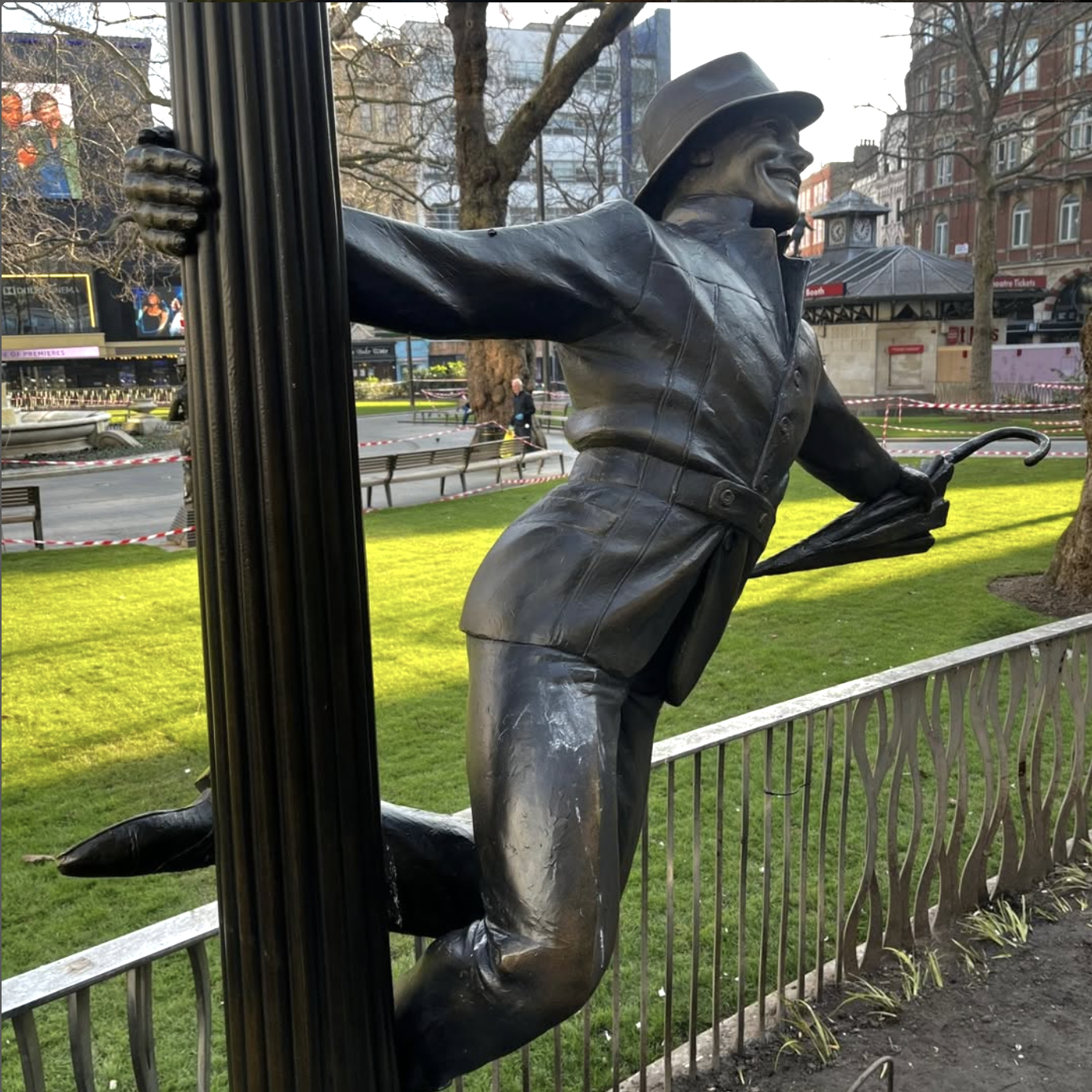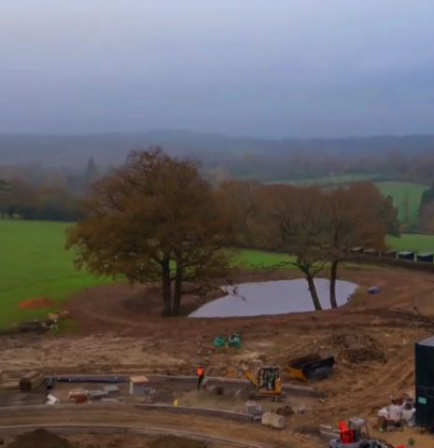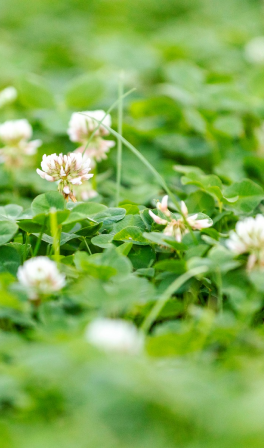If you’re considering creating a haven for pollinators in your garden then you might be considering either Floral Lawn, or Species Rich. Floral Lawns (recently coined “Shaggy Lawns” by Monty Don) and Species Rich Turf offer two exceptional options if you’re looking to support bees, butterflies, and beneficial insects. But what is the difference between them? This comprehensive comparison will help you choose the perfect wild flower lawn for your garden.
Why Choose a Wild Flower Lawn for Your Garden?
Both Floral Lawns and Species Rich Turf create sustainable ecosystems that:
- Provide essential habitat for bees and pollinators
- Reduce water consumption and lawn maintenance
- Create visually stunning landscapes that change with the seasons
- Support biodiversity and ecological balance in your garden
- Eliminate the need for harmful pesticides and fertilisers
Floral Lawn (aka Shaggy Lawn): The Perfect Balance of Beauty and Practicality for Pollinator-Friendly Gardens
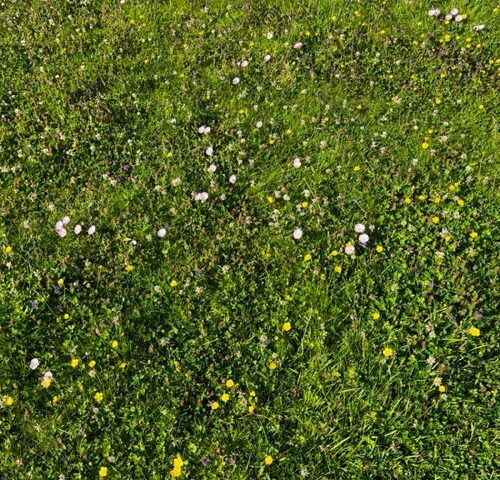
Grasslands Floral Lawn
Grasslands Floral Lawn® delivers the increasingly popular “Shaggy Lawn” look that Monty Don is championing in his Chelsea Flower Show garden in 2025. This carefully curated mix of wildflowers and non-aggressive grasses creates an eco-friendly lawn that supports bees and other pollinators while maintaining practical usability.
Key Features of Floral Lawn:
- Bee-Friendly Composition: Specially selected flowering species like buttercups, daisies, clover and trefoil that attract and support honeybees and native bee species
- Low-Maintenance Eco Gardening: Requires cutting only every 2-3 weeks, perfect for ‘No Mow May’ (and beyond) initiatives, and busy lifestyles
- Family and Pet-Friendly: Resilient enough for family activities while providing insect habitats
- Sustainable Garden Solution: Creates a pollinator paradise without artificial inputs, supporting your eco gardening goals
Pollinator-Attracting Plants in Floral Lawn:
The 12 primary species in Grasslands Floral Lawn have been selected specifically to benefit bees and other beneficial insects:
- Bulbous Buttercup (Ranunculus bulbosus)
- Meadow Buttercup (Ranunculus acris)
- Common Bird’s-foot-trefoil (Lotus corniculatus)
- Daisy (Bellis perennis)
- White Clover (Trifolium repens)
- Selfheal (Prunella vulgaris)
- Betony (Stachys officinalis)
- Tufted Vetch (Vicia cracca)
- Black Medick (Medicago lupulina)
- Scarlet Pimpernel (Anagallis arvensis)
- Common Mouse-ear (Cerastium fontanum)
- Agrimony (Agrimonia eupatoria)
The balance between grass and wildflowers can be managed through your mowing regime—less frequent mowing encourages more flowers for pollinators, making this an adaptable eco gardening solution.
Species Rich Turf: Maximum Biodiversity for Serious Eco Gardening Enthusiasts
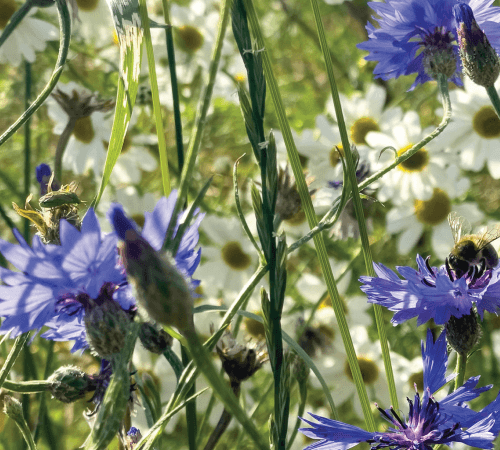
Species Rich wild flowers
For those wanting to create the ultimate insect and pollinator sanctuary, Grasslands Species Rich Turf offers an impressive 80/20 grass/wildflower mix, providing a ready-to-install ecosystem.
Key Features for Enhanced Pollinator Support:
- Superior Biodiversity: Contains over 30 different species of native wildflowers and grasses, creating diverse feeding opportunities for insects
- Immediate Pollinator Habitat: Pre-grown rolls provide instant impact for bees and beneficial insects
- Sustainable Wild Flower Design: Naturally sustainable without plastic reinforcement
- Complete Wildlife Ecosystem: Creates a comprehensive habitat supporting the entire life cycle of many insects and pollinators
Pollinator-Supporting Plant Diversity:
With more than 30 species, Species Rich Turf offers exceptional value for bees, butterflies, and other insects. Notable pollinator-friendly varieties include:
- Common Knapweed (Centaurea nigra)
- Yellow Rattle (Rhinanthus minor)
- Cornflower (Centaurea cyanus)
- Oxeye Daisy (Leucanthemum vulgare)
- Foxglove (Digitalis purpurea)
- Corn Poppy (Papaver rhoeas)
- Meadow Vetchling (Lathyris pratensis)
Which Wild Flower Lawn is Right for Your Eco Gardening Project?
Choose Floral Lawn (Shaggy Lawn) if:
- You want to create the “Shaggy Lawn” look championed by Monty Don
- You want to balance pollinator support with a more traditional lawn appearance
- You have moderate foot traffic but still want to create insect habitat
- You’re new to eco gardening and want a simpler starting point
- You need a bee-friendly solution that can withstand children and pets
Choose Species Rich Turf if:
- Creating a comprehensive pollinator sanctuary is your top priority
- You want maximum support for bees, butterflies, and beneficial insects
- You’re committed to advanced eco gardening principles
- You prefer a meadow-like appearance with greater visual diversity
Installation and Maintenance Tips for Your Pollinator-Friendly Wild Flower Lawn
Both options offer simpler maintenance than traditional lawns while maximising benefits for insects and pollinators:
Floral Lawn (Shaggy Lawn) Eco Gardening Tips:
- Follow Monty Don’s Shaggy Lawn approach by reducing mowing frequency during flowering periods to support bees
- When mowing, set blade height to at least 5cm to preserve nesting sites for insects
- Embrace the slightly untamed, natural aesthetic that makes Shaggy Lawns so appealing
- Avoid chemical treatments that harm beneficial garden insects
- Consider leaving small unmown patches as insect refuges
Species Rich Turf Pollinator Support:
- After installation, water regularly until established to ensure nectar production
- For maximum bee support, mow only once or twice per year
- Cut in late summer after flowering and seed production
- Remove cuttings to prevent soil enrichment, which can reduce wildflower diversity
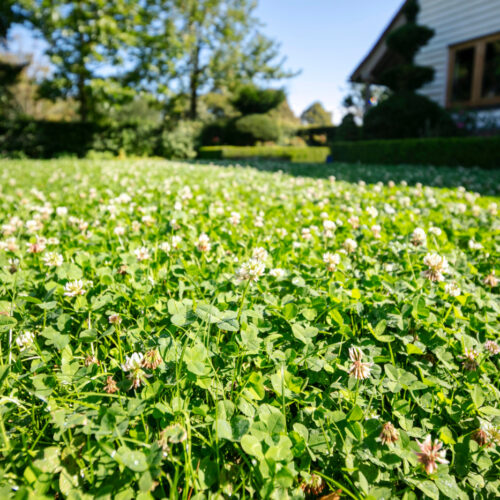
Floral Lawn in Spring
Seasonal Pollinator Benefits of Wild Flower Lawns
One of the key advantages of both lawn types is their ability to support insects throughout the growing season:
Spring: Early flowering species provide crucial nectar for emerging bees and other insects when food sources are scarce.
Summer: Peak flowering creates a buzzing paradise of insect activity, with different species supporting diverse pollinator needs.
Autumn: Late-flowering plants offer essential support for insects preparing for winter, while seed heads provide food for birds.
Transform Your Garden into a Pollinator Paradise with a Shaggy Lawn Approach
Whether you choose the practical beauty of a Floral Lawn (embracing Monty Don’s Shaggy Lawn look) or the rich diversity of Species Rich Turf, both options represent a significant step toward creating more sustainable, wildlife-friendly outdoor spaces that support bees, butterflies, and countless beneficial insects.
By replacing traditional grass monocultures with these biodiverse alternatives, you’re not only creating a visually stunning landscape but also making a meaningful contribution to pollinator conservation and ecological health. Your eco gardening choice helps create the connected habitats these essential insects need to thrive in our increasingly fragmented landscape.
Ready to transform your garden into a pollinator-friendly paradise? Explore our range of wild flower lawn options and join the growing community of eco-conscious gardeners making a difference one lawn at a time.
